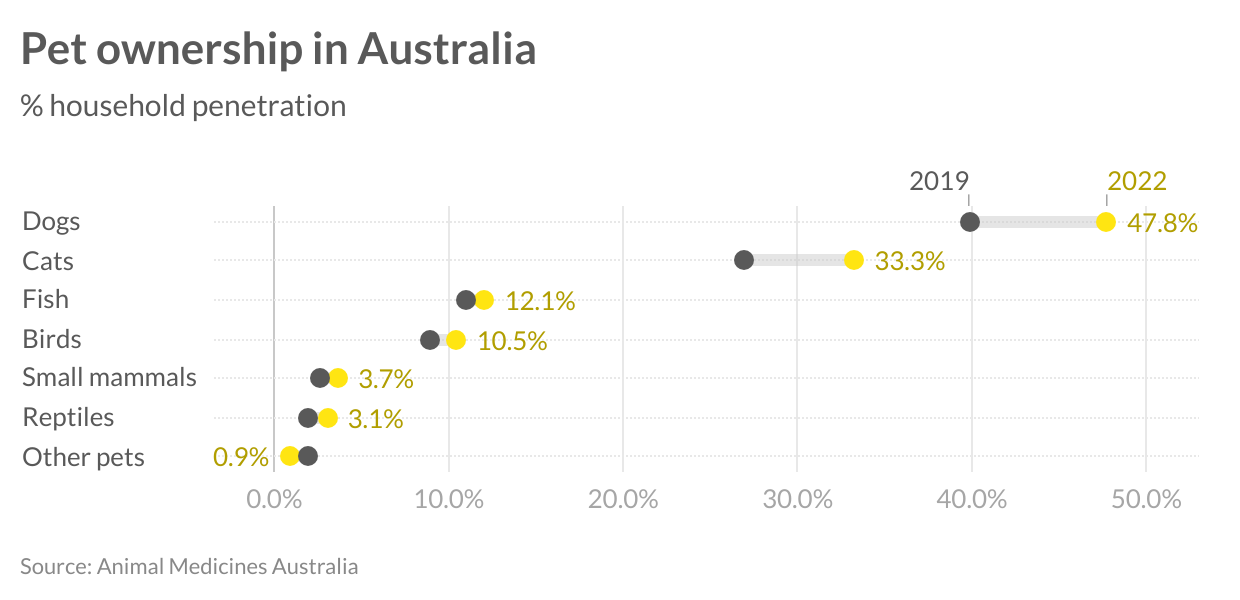Are pets the answer to reinvigorate workplaces? - RWC
Contact
Are pets the answer to reinvigorate workplaces? - RWC
According to Vanessa Rader, Head of research at Ray White Commercial, both office owners and tenants are looking for more creative ways to get their staff back into the workplace.
In a time where creating vibrant workplaces is continuing to be difficult, both office owners and tenants are looking for more creative ways to get their staff back into the workplace.
Pets in office spaces have always been a contentious issue, while some businesses have embraced furry friends in the working environment, balancing all-of-staff wellbeing can sometimes be a struggle. While fear of animals such as dogs only affects 5 per cent of the Australian population, allergies and distraction can also add to the complexities of allowing pets in the workforce.
Australians now have grown their pet population with 68.7 per cent of all households having a pet, up from 61 per cent three years ago, and after spending so much time with them during lockdowns, there has been an increase in pet anxiety which has been a key stumbling block for staff returning to work on a full time basis

Surprisingly, prior to COVID-19 there were a number of tenants actively seeking acceptance in lease terms to allow pets in the office. The majority of these being technology companies who saw the benefits and wellbeing positives in having the calming influence of a pet in the workplace and often sought to attract young and forward thinking staff into their organisation. Remembering that the bulk of pet owners in Australia are aged between 18 and 39, with 80 per cent owning a pet, a stark difference to the baby boomer age group (or traditional office worker), with only 52 per cent of baby boomers owning a pet. Fast forward post pandemic and tenant enquiry and requirement to allow pets in the workplace have subsided, but surprisingly, pet-allied demand to occupy stock have seen some increase including users such as pet insurance companies and pet creatives, an emerging tenant type capitalising on Australia’s 28.73 million pets.
While for some businesses this may have been a fun initiative to help provide emotional support to both staff and pets, other issues such as travelling to work with a pet, time spent taking the pet outside may cause more problems and resentment amongst staff.
So if pets aren’t the answer, what else could drive up workplace occupancy?
While in the past tenants have been responsible for the vibrancy of their own business using communal areas, ping pong and foosball tables to create positive team interactions, now building owners are becoming more invested in helping tenants grow their building activity. Recently we have seen a number of building owners get creative with facilities in their building, no longer are bike racks, end of trip facilities and lobby cafes enough to satisfy occupiers.
Sporting facilities such as basketball half courts, squash courts, virtual golf have started to emerge in Sydney CBD office buildings, used to entice new tenants into their building. The health and wellbeing associated with fitness and exercise together with the fun interactions across the whole building could help with bringing staff back regularly into our cities. With more than 13 million adults in the country actively playing sport and more than 90 per cent having an interest in sport, could we see more sporting offerings within offices make a splash in CBD’s across the country?






